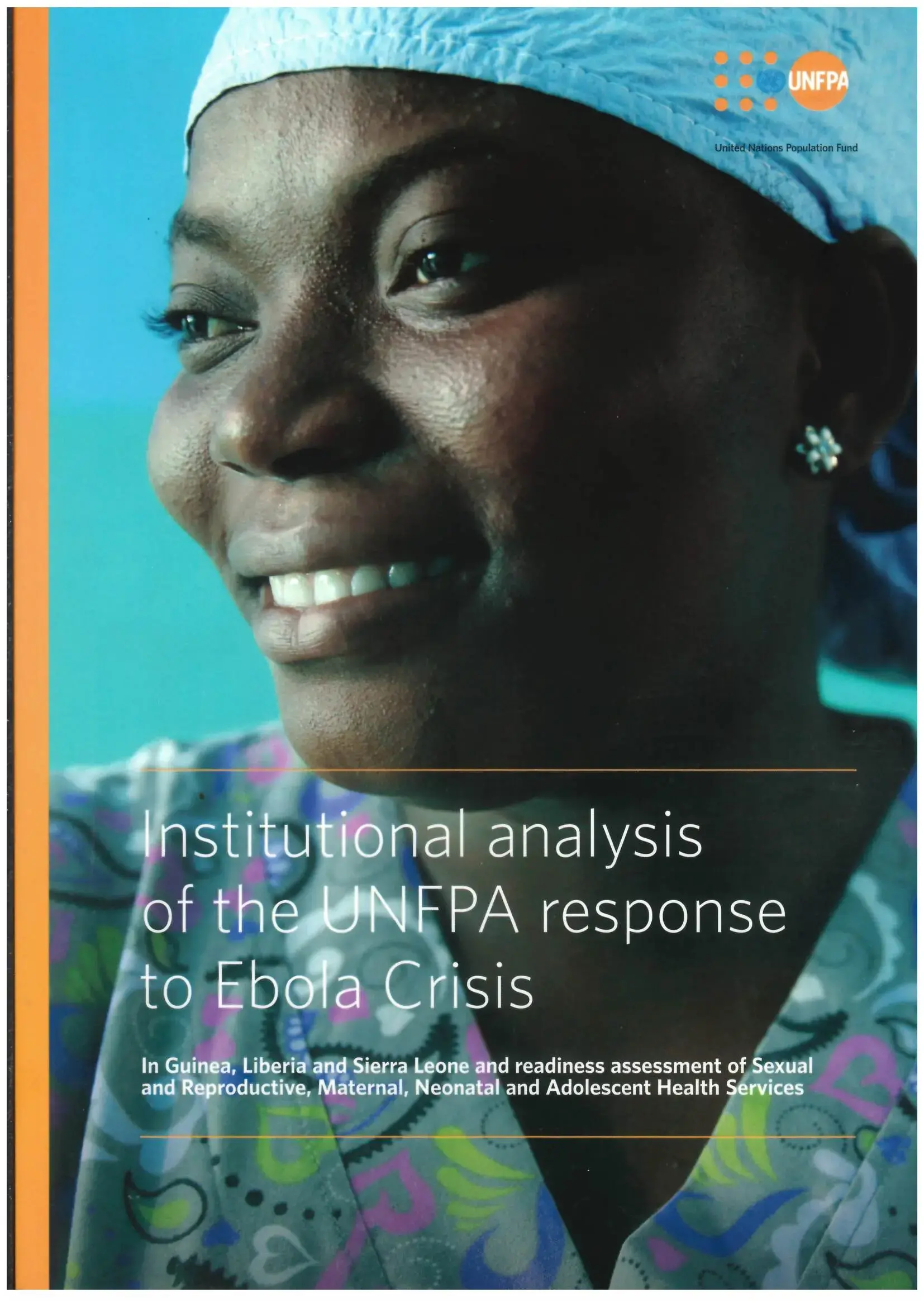This assessment was requested by the three post-Ebola countries and commissioned by UNFPA West and Central Africa Regional Office (WCARO). It analysed UNFPA’s institutional response to the 2014-15 Ebola outbreak in Sierra Leone, Guinea and Liberia and conducted a readiness assessment for sexual and reproductive, maternal, neonatal and adolescent health services at the border areas between these three countries. The assessment
was undertaken between July and August 2016.
The assessment’s specific objectives were to:
- Document UNFPA’s strategic decisions and catalytic interventions in the response, in order to draw lessons and determine the way forward in case of future outbreak and/or any similar health crisis – as well as inform recovery phase contributions.
- Assess access to integrated sexual and reproductive maternal, neonatal and adolescent health (SRMNAH) at cross border areas of Guinea, Liberia and Sierra Leone.
- Assess the availability, distribution, use and quality of services for integrated SRMNAH in general and emergency obstetric and neonatal care (EmONC) in particular.
- Suggest corrective actions regarding access to SRMNAH services and EmONC services in the context of strengthening the health system to adequately respond to emergencies/crisis at the cross borders of the three countries.
This assessment was undertaken through desk review, key informant interviews, Ebola affected individuals’ testimonies and health facility assessment, using EmONC tools. The evaluation team interviewed UNFPA staff in the three country offices and at the regional and headquarter offices, other UN Agencies, UNFPA partners, donors, field teams (including contact tracers), health management teams, health workers and local leaders.
Testimonies of Ebola Virus Disease (EVD) survivors were also collected. While at country offices and in the field, the team observed the commodities, equipment and measures put in place for contact tracing and infection prevention control, as well as crucial logistics such as bicycles, motorbikes and ambulances.
SRMNAH services’ readiness was assessed using data from various registers (for example, delivery ward, operating theatre, obstetric ward) for quantitative performance. Population data on the catchment area was collected to estimate expected deliveries and level of utilization of the services. Existing literature, guidelines and reports were also scrutinized.
Data were also collected through field visits for direct observation, face-to-face interviews with UNFPA staff, local authorities and health workers, and questionnaires or modules adapted from the WCARO model and the Averting Maternal Death and Disability Programme (comprising nine modules).



